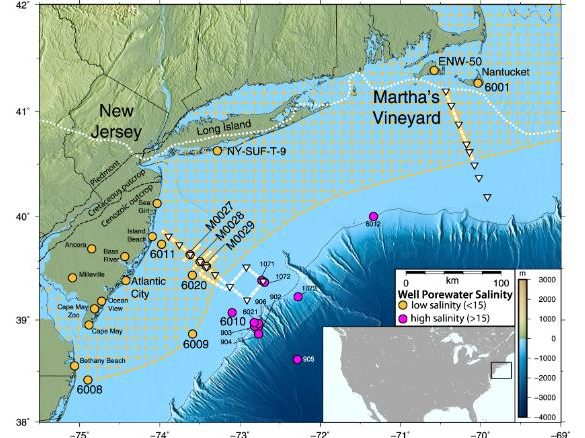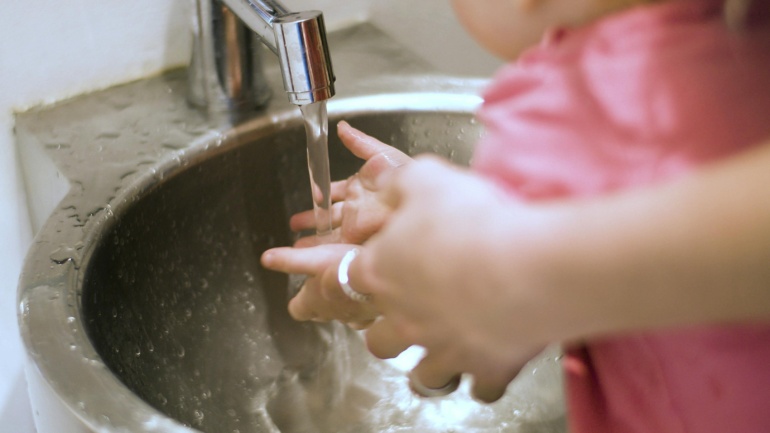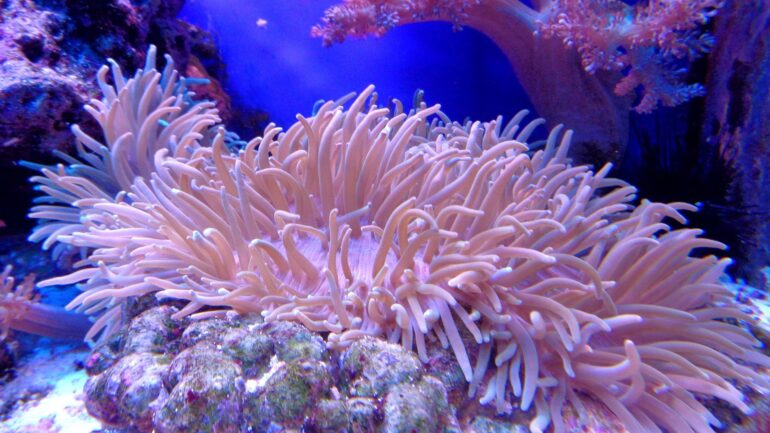By Erin Fee, Staff Writer and Researcher for Save The Water™ | July 20, 2019
There’s something incredible buried beneath the northeast coast of the United States. Marine geologists have discovered 739 trillion gallons of fresh water 600 feet under the ocean floor.1 This vast reservoir stretches across the coastlines of Massachusetts, New York, Connecticut, Rhode Island, and New Jersey.2 It may be the largest freshwater, undersea aquifer ever found. But according to scientists, it isn’t one of a kind. Freshwater aquifers could be a vital resource—but only if used responsibly.
What Are Aquifers?
Many kinds of rock are permeable. This means that they contain contain cracks, gaps, and holes that are capable of holding air and—most importantly—water. Layers of permeable rock under the earth will gradually fill with water from rain and snow. This creates an aquifer, which can be tapped into by humans by drilling wells into the rock.3
But why are there freshwater aquifers under the ocean, often many miles from the coast? Scientists have a likely answer. Tens of thousands of years ago, the world’s ocean levels were lower. Aquifers formed the same way as they do now, with rain and snow being absorbed into the earth and collecting in permeable rock. When much of the world’s ice caps melted 20,000 years ago, the sea level rose and many land areas were covered by the ocean. Though the land is now part of the ocean floor, the ancient aquifers beneath remain.4
The Challenge of Undersea Aquifers
Make no mistake, 739 trillion gallons is a lot of water. But it isn’t infinite. Aquifers are formed gradually, and it is all too easy to take water from them more quickly than they can be replenished by precipitation. Undersea aquifers can’t be replenished at all. These are ancient resources and when they are gone, it’s for good. Also, oil drilling pollutes undersea aquifers.
In addition, accessing the long-buried water will be a challenge. Possible options include drilling into the aquifer from a platform, or drilling from nearby islands and coastlines.
Finally, water from undersea aquifers is not immediately ready to drink. It is slightly salty and requires purification (to learn more about desalination technology, check out this article). According to water scientists, however, it would cost much less energy to purify water from undersea aquifers than it would to desalinate regular salt water.5
Though we are still weighing the costs and benefits of accessing undersea aquifers, early analyses show that it is a promising alternative to desalinating salt water. As it tends to be with precious resources, caution and care will be key.
References
- Criss, Doug. June 27, 2019. “Scientists found a gigantic freshwater aquifer below the Atlantic. It has enough water to fill 1 billion Olympic swimming pools.” CNN. https://edition.cnn.com/2019/06/26/us/freshwater-aquifer-hidden-trnd/index.html
- Geggel, Laura. June 24, 2019. “A Massive Freshwater Sea is Buried Beneath the Atlantic Ocean.” Live Science. https://www.livescience.com/65779-giant-freshwater-aquifer-east-coast.html
- United States Geological Survey. “Aquifers and Groundwater.” USGS. https://www.usgs.gov/special-topic/water-science-school/science/aquifers-and-groundwater?qt-science_center_objects=0#qt-science_center_objects
- Antonio Pasolini. December 11, 2013. New Atlas. “Huge reserves of freshwater lie beneath the ocean floor.” https://newatlas.com/freshwater-reserves-under-sea/30072/
- UCSB. “Vast freshwater reserves found beneath the oceans.” UCSB Geography. https://geog.ucsb.edu/vast-freshwater-reserves-found-beneath-the-oceans/





